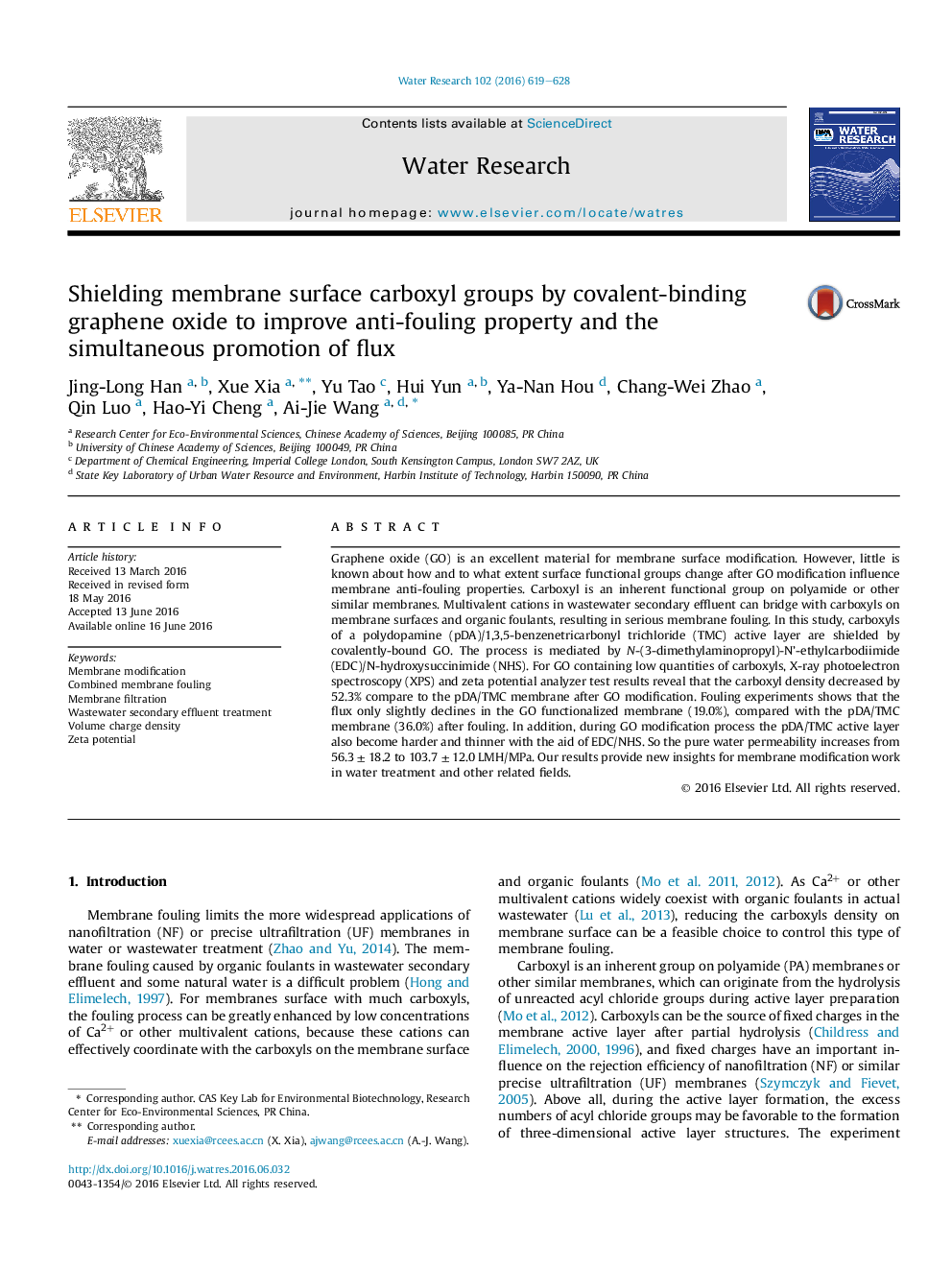| کد مقاله | کد نشریه | سال انتشار | مقاله انگلیسی | نسخه تمام متن |
|---|---|---|---|---|
| 4480892 | 1623066 | 2016 | 10 صفحه PDF | دانلود رایگان |
• A method that can covalently bind GO to membrane surface were developed.
• Membrane anti-fouling properties can be enhanced by GO shielding carboxyls.
• EDC/NHS catalyst can enhance active layer amide-crosslinking and increase flux.
• Promoting flux along with anti-fouling properties is important to M modification.
Graphene oxide (GO) is an excellent material for membrane surface modification. However, little is known about how and to what extent surface functional groups change after GO modification influence membrane anti-fouling properties. Carboxyl is an inherent functional group on polyamide or other similar membranes. Multivalent cations in wastewater secondary effluent can bridge with carboxyls on membrane surfaces and organic foulants, resulting in serious membrane fouling. In this study, carboxyls of a polydopamine (pDA)/1,3,5-benzenetricarbonyl trichloride (TMC) active layer are shielded by covalently-bound GO. The process is mediated by N-(3-dimethylaminopropyl)-N’-ethylcarbodiimide (EDC)/N-hydroxysuccinimide (NHS). For GO containing low quantities of carboxyls, X-ray photoelectron spectroscopy (XPS) and zeta potential analyzer test results reveal that the carboxyl density decreased by 52.3% compare to the pDA/TMC membrane after GO modification. Fouling experiments shows that the flux only slightly declines in the GO functionalized membrane (19.0%), compared with the pDA/TMC membrane (36.0%) after fouling. In addition, during GO modification process the pDA/TMC active layer also become harder and thinner with the aid of EDC/NHS. So the pure water permeability increases from 56.3 ± 18.2 to 103.7 ± 12.0 LMH/MPa. Our results provide new insights for membrane modification work in water treatment and other related fields.
Figure optionsDownload high-quality image (387 K)Download as PowerPoint slide
Journal: Water Research - Volume 102, 1 October 2016, Pages 619–628
